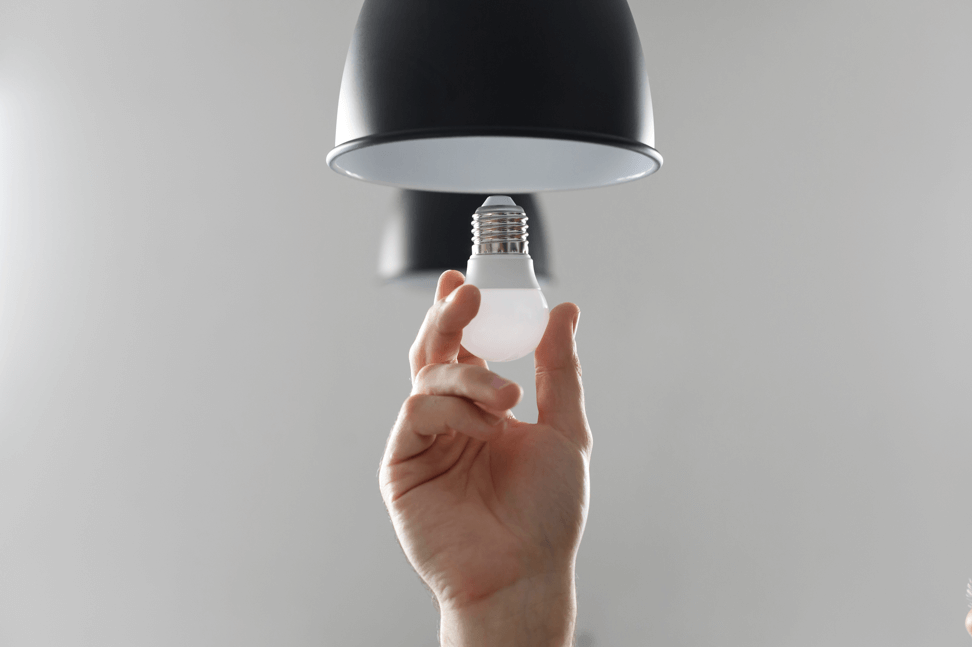The products with LED lighting (lamps, luminaires, reflectors, spotlight, among others) are currently taking over the lighting market. They are more efficient, more environmentally friendly and very economical. In addition to being excellent alternatives if we talk about costs, comparing traditional lamps. But how different is LED technology compared to incandescent and compact fluorescent lamps?
5 reasons why you should choose Led Light for your house
LED lighting is more energy efficient
The main argument, of course, refers to the advantage that LED lighting technologies have in terms of energy efficiency. With rising electricity costs, saving is becoming more and more relevant. For example, up to 40% of a city’s electricity costs are spent on street lighting alone. By applying energy efficient LED lamps, these costs can be reduced by 70-90% and generate significant cost savings.
LED lighting has a longer lifespan
When comparing the lifespan of LED bulbs with incandescent and conventional bulbs, it is clear that LED lighting is by far the best solution. Conventional lamp life is approximately 8,000 hours, while incandescent lamps last approximately 1,200 hours. LED technology, on the other hand, has an impressive lifespan: over 25,000 hours! This means that an LED light bulb is an investment you make to last decades of sustainable lighting in your home or commercial, public or building facilities. For urban lighting, this long lifetime also pays off substantially in cost savings and maintenance. Instead of having to replace conventional lamps regularly and thus generating high maintenance costs, LED lamps with their great long life expectancy lead to significant cost savings regarding maintenance.

LED lighting helps you save money on your electric bills
LED lamps use less energy (wattage) per unit of light (lumen) generated. Lumen efficiency is expressed in lumens/watts (lm/w), indicating the amount of light produced per watt of energy consumed. Always choose the ones that consume the least amount of energy per amount of light. In addition to being durable, they reduce your electricity bill by providing 100 or even 200 lumens per watt. Conventional lamps, in turn, use about twice the amount of watts and incandescent light bulbs around 10x. In a domestic or residential setting, this lifetime and efficiency difference between incandescent lighting and LED lighting helps you to significantly reduce your electricity bill. In conclusion, an LED light bulb is therefore nearly 50 times more efficient over life and around 70-80% more efficient than a conventional incandescent option. Still impressed? This gets better!
LED lighting is non-toxic and more eco-friendly
In addition to the convincing differences in efficiency, lifespan and therefore also electricity costs, LED lighting is also the greenest solution available in today’s markets. On the one hand, LEDs, in contrast to conventional ones, do not contain highly toxic mercury, which is harmful not only to the environment but also to your personal health. LED lights are free of toxic materials and are 100% recyclable.
Flexibility in color and design
LED lighting can be easily combined with varied shapes and special designs to produce highly efficient solutions for residential and commercial lighting. Individual LEDs can be dynamically controlled and adjusted via timers, internet or remotely. Functions such as intensity, direction or color are the differentials of this lighting. A well-designed LED lighting system can realize some amazing lighting effects that influence not only the eyes, but also people’s mood and mind.
LED lights are available in the strip form and can be used for lighting and ornamental purposes. Irrespective of the type of usage, you’ll have to connect them to an electric source. In establishing such a connection, the solder wire connectors can play an important role.






